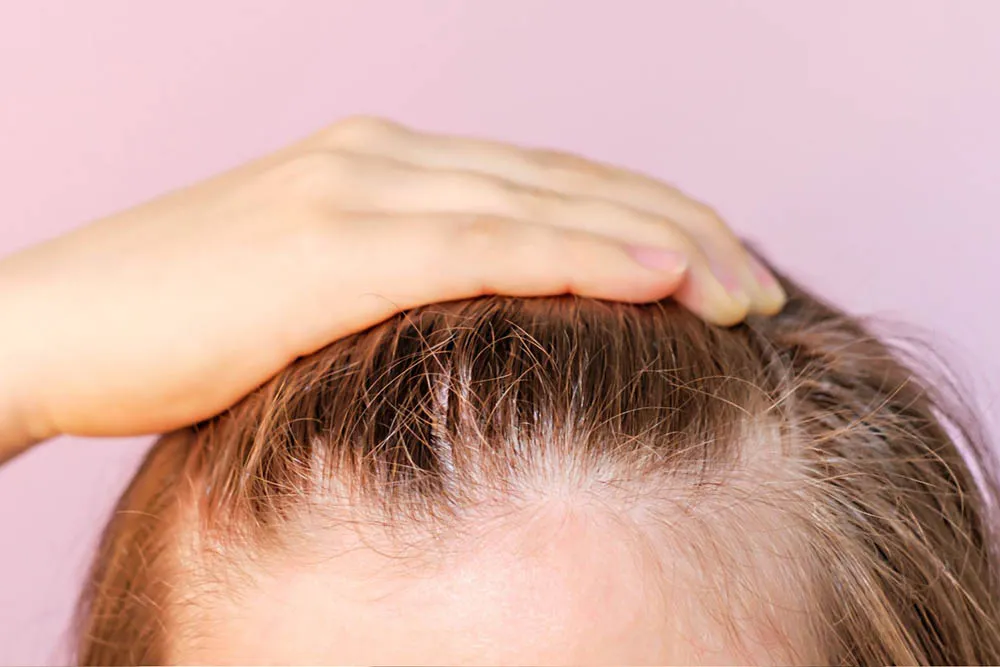Are hairline transplants the right solution for your receding hairline? This guide explains how hairline transplants work, the different techniques used, costs involved, and what results you can expect. Whether you’re new to the idea or ready to take the next step, read on to find out if this procedure is right for you.
Key Takeaways
- Hairline transplants offer a permanent solution for hereditary hair loss, with successful outcomes depending on the surgeon’s expertise and the quality of donor hair.
- The two main techniques, FUT and FUE, differ in invasiveness and recovery, with FUT providing a higher graft yield, while FUE offers less scarring and quicker recovery.
- Factors such as donor hair availability, hair loss stability, and post-transplant care are crucial to ensuring satisfactory results and maintaining the longevity of a hairline transplant.
Table of Contents
Understanding Hairline Transplants
A hair transplant is a procedure designed to restore a receding hairline using existing hair from the patient’s own scalp. This procedure is primarily intended for individuals experiencing permanent hair loss due to hereditary conditions such as androgenetic alopecia, male pattern baldness, or autoimmune disorders like alopecia areata. Hair transplants are a popular choice for those looking to regain their confidence and achieve a natural-looking hairline that blends seamlessly with their existing hair, and hair restoration surgery is another option for those seeking to address similar concerns.
The success of hairline transplants largely depends on the expertise of the hair transplant surgeon. Choosing a skilled and experienced surgeon is crucial to achieving optimal results and minimizing risks. The donor hair used in hair transplants is typically resistant to hair loss, ensuring that the transplanted hair remains permanent. This resilience makes hair transplants a reliable solution for individuals dealing with permanent hair loss.
Types of Hairline Transplant Techniques

When it comes to hair transplant techniques, two major methods stand out: Follicular Unit Transplantation (FUT) and Follicular Unit Extraction (FUE). Each technique has its own set of advantages and considerations, making it essential to choose the one that best suits your needs.
Let’s delve into the specifics of each method to help you understand how they work and what to expect.
Follicular Unit Transplantation (FUT)
Follicular Unit Transplantation (FUT) involves removing a strip of scalp from the back of the head, which is then dissected into individual follicular units for transplantation. This method allows for the harvesting of a larger number of grafts in a single session, making it a cost-effective option for those with extensive hair loss. The dissection process is crucial as it preserves the protective tissue around the hair follicles, resulting in higher survival rates of the grafts.
However, FUT does have its drawbacks. The procedure is more invasive and leaves a linear scar in the donor area, which can be visible if the hair is worn short. Despite this, many patients find the benefits of a higher graft yield and cost-effectiveness outweigh the downsides, especially if they plan to keep their hair longer to cover the scar.
Follicular Unit Extraction (FUE)
Follicular Unit Extraction (FUE) is a less invasive technique that involves extracting individual hair follicles directly from the donor area without removing a strip of scalp. This method is ideal for those who prefer a shorter hairstyle, as it leaves minimal scarring compared to FUT. The FUE technique allows for a more discreet harvesting process, making it a popular choice for many patients, especially when considering the health of the hair follicle.
While FUE may be more time-consuming and slightly more expensive due to the meticulous nature of the extraction process, it offers the benefit of a quicker recovery time and less visible scarring. Patients can expect natural-looking results as the hair transplant surgeon carefully places the individual grafts to mimic natural hair growth patterns.
Factors Affecting Hairline Transplant Success
Several factors can influence the success of a hairline transplant. The overall health and age of the patient play a significant role, with younger individuals generally experiencing higher success rates compared to older patients. Older patients may face challenges due to a limited supply of healthy donor hair, which can affect the overall density and appearance of the transplanted hair.
The quality and density of the donor hair are crucial for achieving satisfactory results. Hair type, thickness, and curliness all impact the number of grafts needed and the visual density achieved after the procedure. Patients with more extensive hair loss may require additional grafts, which can limit the availability of donor hair and affect the final outcome.
Stabilization of hair loss is also essential to ensure consistent results over time. Understanding the potential for future hair loss and setting realistic expectations can significantly enhance patient satisfaction. Both FUT and FUE are effective methods for hair restoration, but the choice of technique should be based on individual needs and the extent of hair loss.
Cost of Hairline Transplants
The cost of hairline transplants can vary widely, typically ranging from £2,000 to £15,000. Several factors influence the cost, including the size of the procedure, the reputation of the surgeon, and the location of the clinic. Patients may also pay more for hair transplants performed by highly experienced surgeons and staff, as their expertise can significantly impact the quality of the results.
Additionally, many clinics offer competitive packages and payment plans to make hair transplant surgeries and cosmetic surgery more accessible. Considering these options and selecting a clinic that balances quality and affordability is important. Investing in a reputable surgeon can ensure optimal outcomes and long-lasting results.
Key Considerations Before Getting a Hairline Transplant

Before undergoing a hairline transplant surgery, it’s crucial to evaluate several key considerations. Factors such as the availability of donor hair, the stability of hair loss, and the expertise of the surgeon can significantly influence the success of the procedure to perform hair transplant surgery.
Let’s explore these considerations in more detail.
How Much Donor Hair Do You Have?
The amount of donor hair available on the sides and back of the head is a critical factor in the success of hair transplants. Typically, a donor area can yield around 8,000 hair grafts, which is often sufficient for effective restoration. However, candidates with insufficient donor hair should be realistic about how much hair coverage can be achieved.
Having enough donor hair ensures that the transplanted areas receive adequate density, resulting in a natural-looking hairline. Discussing donor hair availability with your surgeon helps set realistic expectations and develop an effective treatment plan.
Is Your Hair Loss Stable?
Stabilizing hair loss before undergoing a transplant is crucial for achieving lasting results. Waiting until hair loss has stabilized helps avoid the need for touch-up procedures and ensures a more natural-looking hairline. Not waiting for stabilization can lead to inconsistent results, requiring further interventions.
Stabilizing hair loss before a transplant ultimately leads to better patient satisfaction and outcomes. Discussing the stability of your hair loss with your surgeon can help determine the best timing for the procedure.
Designing a Natural-Looking Hairline
A natural-looking hairline is essential in hair transplant surgery. It plays a critical role in the overall success of the procedure. The goal is to create a hairline that enhances the patient’s appearance without attracting negative attention. The design should adhere to the ‘rule of thirds,’ which divides the face into three proportional sections to achieve an aesthetically pleasing look.
Graft placement is also essential for achieving a natural appearance. Finer single hair follicles are typically used at the front, while thicker grafts are positioned further back. Adding micro-irregularities to the hairline can enhance the natural look, as real hairlines are not completely uniform.
Consideration of various facial landmarks ensures harmony with other features, resulting in a balanced and natural-looking hairline.
Post-Transplant Care and Recovery
Proper post-transplant care and recovery are vital for the success of hairline transplants. Following the surgery, patients should adhere to guidelines on caring for the grafts, which may involve taking time off work and avoiding touching the grafts for the first few days. Temporary side effects such as scalp swelling, tightness, and minor scabbing are common but typically subside within a few days.
Patients may receive a spray to aid in recovery and stimulate hair growth, promoting healing and ensuring the longevity of the transplanted hairs. It’s common for the transplanted hair to shed shortly after the procedure, with new growth starting within a few months. Non-dissolvable stitches, if used, are usually removed within 10 to 14 days post-transplant.
Preventing Further Hair Loss
Preventing further hair loss is essential for maintaining the results of a hairline transplant. Lifestyle habits, age, general health, and genetics can all impact the longevity of hair transplants. While hair transplants provide a permanent solution, ongoing care is necessary to preserve the results.
Patients should adopt a healthy lifestyle, including a balanced diet and regular exercise, to support overall health and hair growth. Avoiding stress and using recommended medical treatments can also help prevent further hair loss and ensure the success of the transplant.
Summary
Hairline transplants offer a transformative solution for individuals dealing with hair loss. By understanding the procedures, costs, and factors that influence success, patients can make informed decisions and achieve natural-looking results. Key considerations such as donor hair availability and hair loss stabilization are crucial for ensuring optimal outcomes.
In conclusion, hairline transplants can significantly enhance confidence and appearance when performed by a skilled surgeon. With proper care and preventative measures, the results can be long-lasting, providing a permanent solution to hair loss. We hope this guide has provided valuable insights and inspired you to explore the possibilities of hair restoration.
Contact us today and get the best offer!
Read Also:
Turkish Hair Transplant Cost: Your Comprehensive Guide
Top Cutting Edge Hair Transplant Techniques for Optimal Results
Top Body Hair Transplant in Turkey
Frequently Asked Questions
How long does it take to see results after a hairline transplant?
You can expect to see new hair growth a few months after a hairline transplant, with full results becoming apparent within 12 to 18 months.
Are hairline transplants permanent?
Hairline transplants are indeed permanent, as they utilize donor hair that is resistant to future hair loss.
How much does a hairline transplant cost?
A hairline transplant typically costs between £2,000 and £15,000, influenced by factors such as the procedure’s size, the surgeon’s reputation, and the clinic’s location. Consider these variables when planning your investment in hair restoration.
What are the common side effects of a hairline transplant?
Common side effects of a hairline transplant often include temporary scalp swelling, tightness, and minor scabbing, all of which generally resolve within a few days.
How important is the surgeon’s experience for a hairline transplant?
The surgeon’s experience is vital for ensuring optimal results and reducing risks in a hairline transplant. Selecting a skilled professional can greatly impact the outcome of the procedure.

